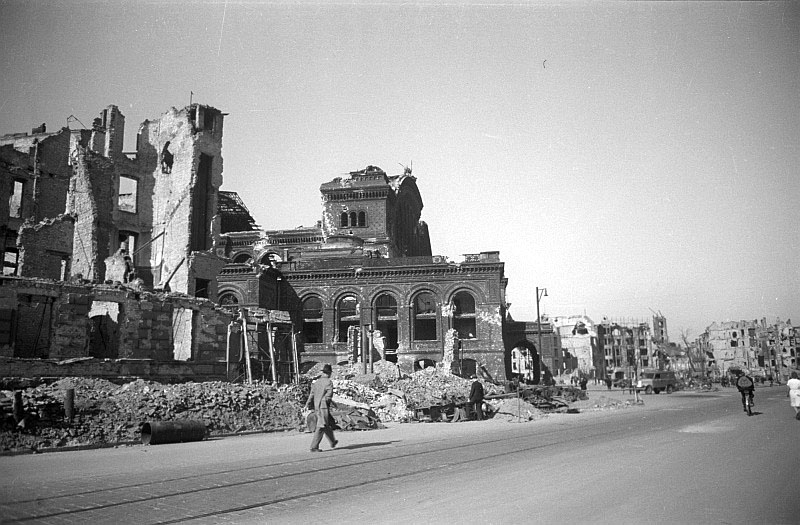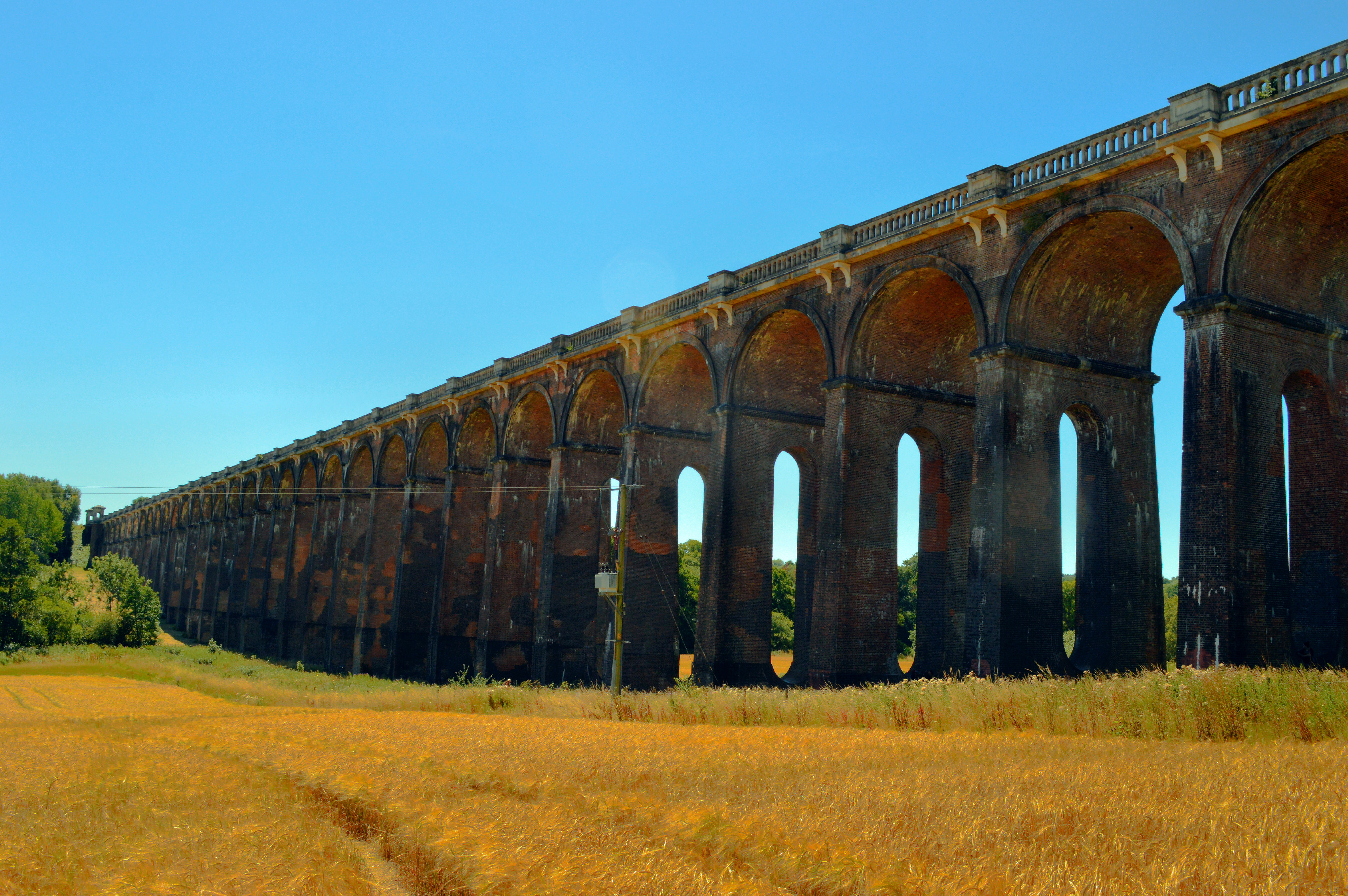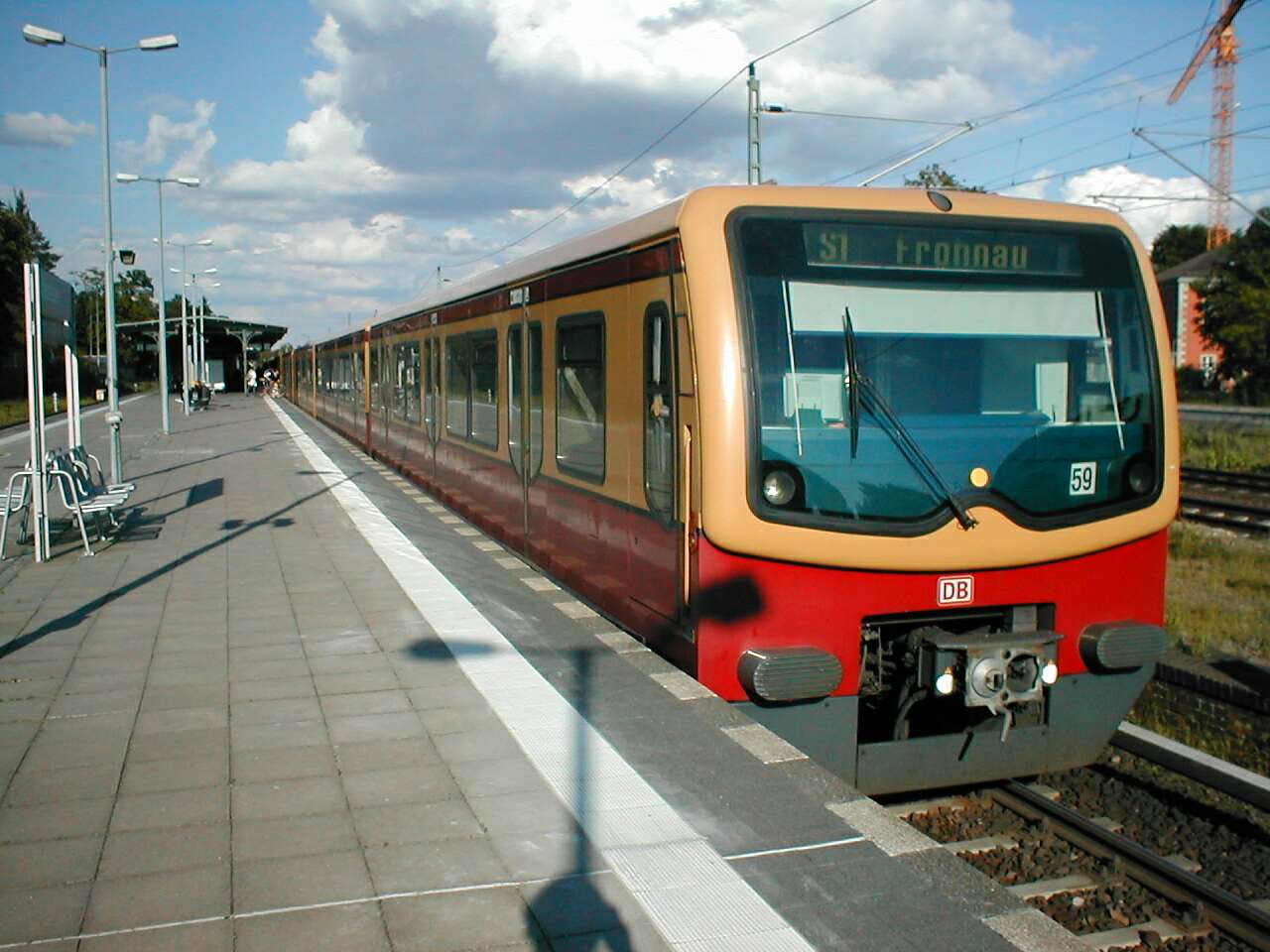|
Prinzenstraße (Berlin U-Bahn)
Prinzenstraße is a Berlin U-Bahn station on lines U1 and U3. Overview The station is located roughly where the eponymous street crosses the Landwehrkanal in Kreuzberg. The nearby ''Böcklerpark'', a small park with a hall where music events are often held, and the ''Sommerbad Kreuzberg'' swimming pool, colloquially called ''Prinzenbad'', are among the most popular venues in central Kreuzberg. The street and subsequently the station were named after Prince William I, the later German Emperor. The station on the first U-Bahn line from Potsdamer Platz to Stralauer Tor was opened on 18 February 1902. Because the station is on a viaduct above the junction of ''Prinzenstraße'' and ''Gitschiner Straße'', a street level entrance hall could only be erected on its south side on the grounds of a gas plant, while the stairs to the northern platform had to be included in the opposite residential building. Destroyed in World War II on 28/29 January 1944 and 3 February 1945, the station ... [...More Info...] [...Related Items...] OR: [Wikipedia] [Google] [Baidu] |
Kreuzberg
Kreuzberg () is a district of Berlin, Germany. It is part of the Friedrichshain-Kreuzberg borough located south of Berlin-Mitte, Mitte. During the Cold War era, it was one of the poorest areas of West Berlin, but since German reunification in 1990, it has undergone significant gentrification and is now known for its vibrant arts scene. The borough is known for its large percentage of immigrants and descendants of immigrants, many of whom are of Turks in Germany, Turkish ancestry. This influx began in the 1960s and 1970s when West Germany invited 'Gastarbeiter' (guest workers) from various countries, including Turkey, Italy, Greece, and Yugoslavia, to address labour shortages and aid in Reconstruction of Germany, post-war reconstruction. As of 2006, 31.6% of Kreuzberg's inhabitants did not have German citizenship. Kreuzberg is known for its diverse cultural life and experimental alternative lifestyles, making it an attractive area for many. However, some parts of the district ar ... [...More Info...] [...Related Items...] OR: [Wikipedia] [Google] [Baidu] |
Berlin Potsdamer Platz Railway Station
Berlin Potsdamer Platz is a railway station in Berlin. It is completely underground and situated under Potsdamer Platz in central Berlin. Regional and Berlin S-Bahn, S-Bahn services call at the station, and it is also served by Berlin U-Bahn, U-Bahn line U2 (Berlin U-Bahn), U2. History S-Bahn The first station at Potsdamer Platz was the Berlin Potsdamer Bahnhof, Potsdamer Bahnhof terminal station, terminus, which was closed on 27 September 1945 due to war damage. In 1939 the S-Bahn, or ''Stadtbahn'' (City Railway), arrived. The idea for a Berlin Nord-Süd-Tunnel, North-South Link rapid transit rail line from Unter den Linden to Yorckstraße, via Potsdamer Platz and Anhalter Bahnhof, had first been mooted in 1914, but it was not planned in detail until 1928, and then approval had to wait until 1933. Begun in 1934, it was plagued with disasters. Determination to have it finished in time for the Berlin Olympic Games in 1936 meant vital safety measures were ignored: on ... [...More Info...] [...Related Items...] OR: [Wikipedia] [Google] [Baidu] |
U3 (Berlin U-Bahn) Stations
U3 or U-3 may refer to: Transportation * U3, an underground rapid transit line in many major German/Austrian cities: ** U3 (Berlin U-Bahn) ** U3 (Frankfurt U-Bahn) ** U3 (Hamburg U-Bahn) ** U3 (Munich U-Bahn) ** U3 (Nuremberg U-Bahn) ** U3 (Stuttgart Stadtbahn) ** U3 (Vienna U-Bahn) * Avies (IATA code: U3), an Estonian airline * Cessna U-3, the military model of the Cessna 310 aircraft * German submarine U-3, German submarine ''U-3'', one of several German submarines * Boeing customer code, Boeing Customer Code for Garuda Indonesia Computer technology * U3 (software), a design specification for USB storage, created by U3, LLC * U3, SD card#UHS Speed Class, a speed class for Secure Digital (SD) cards * U.3, an improvement to the U.2 storage interface standard Video games * ''Ultima III: Exodus'', a 1983 video game * ''Uncharted 3: Drake's Deception'', a 2011 video game Other * U3, an Unemployment#United States Bureau of Labor statistics, unemployment figure released by the United ... [...More Info...] [...Related Items...] OR: [Wikipedia] [Google] [Baidu] |
U1 (Berlin U-Bahn) Stations
U1, U.I or U-1 may refer to: People and characters *Yuvan Shankar Raja (stage name: U1; born 1979), a Tamil musician and film composer *U-1, a fictional character, the protagonist of the ''Gitaroo Man'' video game Computing and electronics *U1, a Secure Digital#Speed class rating, speed class for Secure Digital (SD) cards *Apple U1, a mobile system-on-a-chip *''Ultima I: The First Age of Darkness'', a 1981 video game *U1 Technology, a video game publisher Military *U-1, the 1924 United States Army Air Service aircraft designation system, USAF and 1962 United States Tri-Service aircraft designation system, US Military's designation for the De Havilland Canada DHC-3 Otter light transport aircraft *U-1, Soviet Union military aircraft designation systems, Soviet designation for Avro 504 trainer *Multiple German U-boats named German submarine U-1, ''U-1'' *Oberursel U.I, an early German aircraft engine *HDMS U-1, a Danish submarine *SM U-1 (Austria-Hungary), SM U-1, an Austro-Hungarian ... [...More Info...] [...Related Items...] OR: [Wikipedia] [Google] [Baidu] |
The Frog Prince (story)
"The Frog Prince; or, Iron Henry" (, literally "The Frog King or the Iron Henry") is a German fairy tale collected by the Brothers Grimm and published in 1812 in ''Grimm's Fairy Tales'' (KHM 1). Traditionally, it is the first story in their folktale collection. The tale is classified as Aarne-Thompson type 440. "The Frog Prince" can be compared to the similar European fairy tale " The Frog Princess". Origin Editions The story is best known through the rendition of the Brothers Grimm, who published it in their 1812 edition of ''Kinder- und Hausmärchen'' (''Grimm's Fairy Tales''), as tale no. 1. An older, moralistic version was included in the Grimms' handwritten Ölenberg Manuscript from 1810. Jack Zipes noted in 2016 that the Grimms greatly treasured this tale, considering it to be one of the "oldest and most beautiful in German-speaking regions." Sources The Grimms' source is unclear, but it apparently comes from an oral tradition of Dortchen Wild's family in Kassel. ... [...More Info...] [...Related Items...] OR: [Wikipedia] [Google] [Baidu] |
Postmodern Architecture
Postmodern architecture is a style or movement which emerged in the 1960s as a reaction against the austerity, formality, and lack of variety of modern architecture, particularly in the International Style (architecture), international style advocated by Philip Johnson and Henry-Russell Hitchcock. The movement was formally introduced by the architect and urban planner Denise Scott Brown and architectural theorist Robert Venturi in their 1972 book ''Learning from Las Vegas'', building upon Venturi's "gentle manifesto" ''Complexity and Contradiction in Architecture'', published by the Museum of Modern Art in New York in 1966. The style flourished from the 1980s through the 1990s, particularly in the work of Scott Brown & Venturi, Philip Johnson, Charles Moore (architect), Charles Moore and Michael Graves. In the late 1990s, it divided into a multitude of new tendencies, including high-tech architecture, neo-futurism, new classical architecture, and deconstructivism. However, some ... [...More Info...] [...Related Items...] OR: [Wikipedia] [Google] [Baidu] |
World War II
World War II or the Second World War (1 September 1939 – 2 September 1945) was a World war, global conflict between two coalitions: the Allies of World War II, Allies and the Axis powers. World War II by country, Nearly all of the world's countries participated, with many nations mobilising all resources in pursuit of total war. Tanks in World War II, Tanks and Air warfare of World War II, aircraft played major roles, enabling the strategic bombing of cities and delivery of the Atomic bombings of Hiroshima and Nagasaki, first and only nuclear weapons ever used in war. World War II is the List of wars by death toll, deadliest conflict in history, causing World War II casualties, the death of 70 to 85 million people, more than half of whom were civilians. Millions died in genocides, including the Holocaust, and by massacres, starvation, and disease. After the Allied victory, Allied-occupied Germany, Germany, Allied-occupied Austria, Austria, Occupation of Japan, Japan, a ... [...More Info...] [...Related Items...] OR: [Wikipedia] [Google] [Baidu] |
Gasification
Gasification is a process that converts biomass- or fossil fuel-based carbonaceous materials into gases, including as the largest fractions: nitrogen (N2), carbon monoxide (CO), hydrogen (H2), and carbon dioxide (). This is achieved by reacting the feedstock material at high temperatures (typically >700 °C), without combustion, via controlling the amount of oxygen and/or steam present in the reaction. The resulting gas mixture is called syngas (from synthesis gas) or producer gas and is itself a fuel due to the flammability of the H2 and CO of which the gas is largely composed. Power can be derived from the subsequent combustion of the resultant gas, and is considered to be a source of renewable energy if the gasified compounds were obtained from biomass feedstock. An advantage of gasification is that syngas can be more efficient than direct combustion of the original feedstock material because it can be combusted at higher temperatures so that the thermodynamic upper limi ... [...More Info...] [...Related Items...] OR: [Wikipedia] [Google] [Baidu] |
Viaduct
A viaduct is a specific type of bridge that consists of a series of arches, piers or columns supporting a long elevated railway or road. Typically a viaduct connects two points of roughly equal elevation, allowing direct overpass across a wide valley, road, river, or other low-lying terrain features and obstacles. The term ''viaduct'' is derived from the Latin ''via'' meaning "road", and ''ducere'' meaning "to lead". It is a 19th-century derivation from an analogy with ancient Roman aqueducts. Like the Roman aqueducts, many early viaducts comprised a series of arches of roughly equal length. Over land The longest viaduct in antiquity may have been the Pont Serme which crossed wide marshes in southern France. At its longest point, it measured 2,679 meters with a width of 22 meters. Viaducts are commonly used in many cities that are railroad hubs, such as Chicago, Birmingham, London and Manchester. These viaducts cross the large railroad yards that are needed for freigh ... [...More Info...] [...Related Items...] OR: [Wikipedia] [Google] [Baidu] |
Stralauer Tor (Berlin U-Bahn)
Stralauer Tor (''Osthafen'' as of 1924) was a Berlin U-Bahn station in Berlin-Friedrichshain. It operated between Warschauer Straße and Schlesisches Tor stations on today's U1. Following its destruction in World War II it was never rebuilt and is one of three Berlin U-Bahn stations (the others being Nürnberger Platz, which was closed and demolished in 1961 and Französische Straße, which was closed in 2020) to have been abandoned after having previously been in service. History ''Stralauer Tor'' was an elevated station built into the north-eastern part of the viaduct, which featured a barrel-shaped roof and two street level stairwell entrances accommodating opposing platform sides.berliner-untergrundbahn.de ''Berlins U-Bahnstrecken'' It was constructed by German engineering company |
U-Bahn Berlin Prinzenstraße 1900
Rapid transit in Germany consists of four systems and 14 systems. The , commonly understood to stand for ('underground railway'), are conventional rapid transit systems that run mostly underground, while the or ('city rapid railway') are commuter rail services, that may run underground in the city center and have metro-like characteristics in Munich, Hamburg and Berlin which they only have to a lesser extent in other cities. There are also over a dozen semi-metro or systems that are rapid transit in the city center and light rail outside. There are four systems, namely in Berlin, Hamburg, Munich and Nuremberg; these are all run by the transit authorities in the city. Some cities call their "" (like Frankfurt) or abbreviate their with a U. The confusing term is also used on occasion and as is often seen as the more desirable term, common parlance and non-specialist media are often not very rigorous with the definition of their terms. Additionally, several cities in th ... [...More Info...] [...Related Items...] OR: [Wikipedia] [Google] [Baidu] |
Berlin
Berlin ( ; ) is the Capital of Germany, capital and largest city of Germany, by both area and List of cities in Germany by population, population. With 3.7 million inhabitants, it has the List of cities in the European Union by population within city limits, highest population within its city limits of any city in the European Union. The city is also one of the states of Germany, being the List of German states by area, third smallest state in the country by area. Berlin is surrounded by the state of Brandenburg, and Brandenburg's capital Potsdam is nearby. The urban area of Berlin has a population of over 4.6 million and is therefore the most populous urban area in Germany. The Berlin/Brandenburg Metropolitan Region, Berlin-Brandenburg capital region has around 6.2 million inhabitants and is Germany's second-largest metropolitan region after the Rhine-Ruhr region, as well as the List of EU metropolitan areas by GDP, fifth-biggest metropolitan region by GDP in the European Union. ... [...More Info...] [...Related Items...] OR: [Wikipedia] [Google] [Baidu] |






